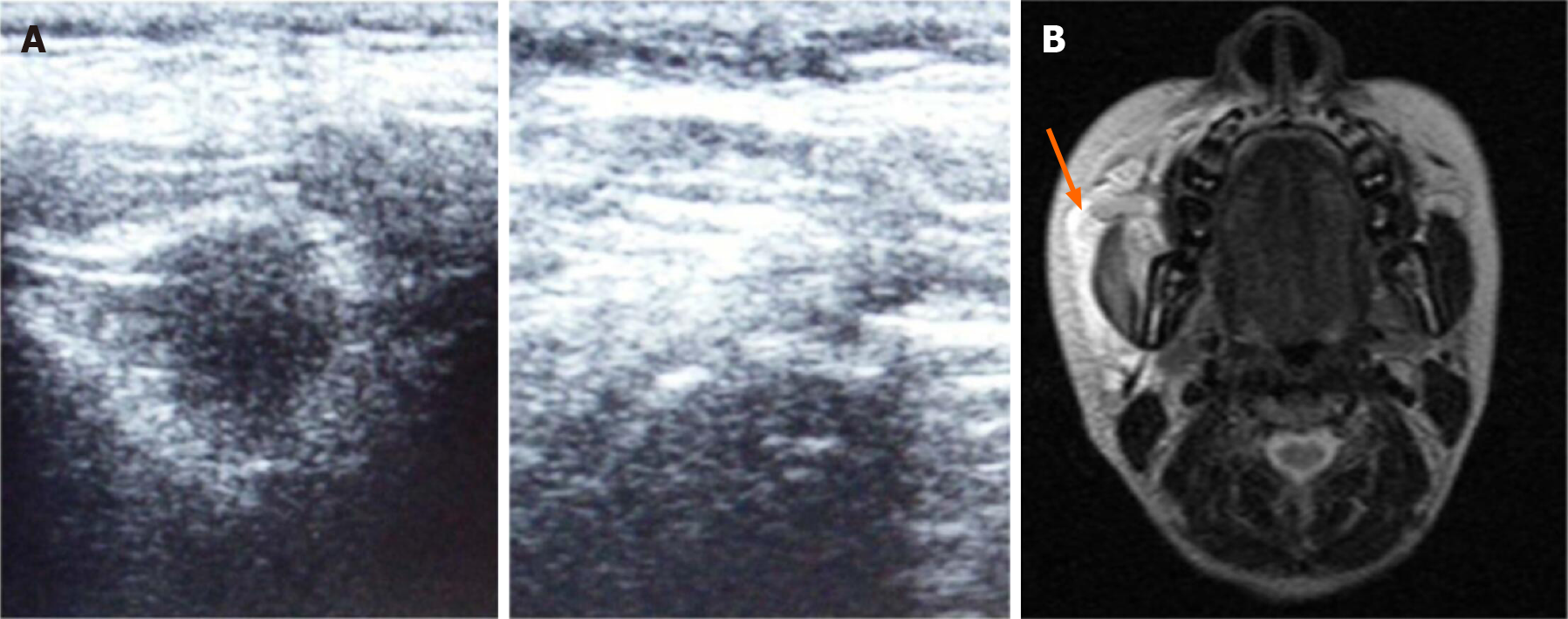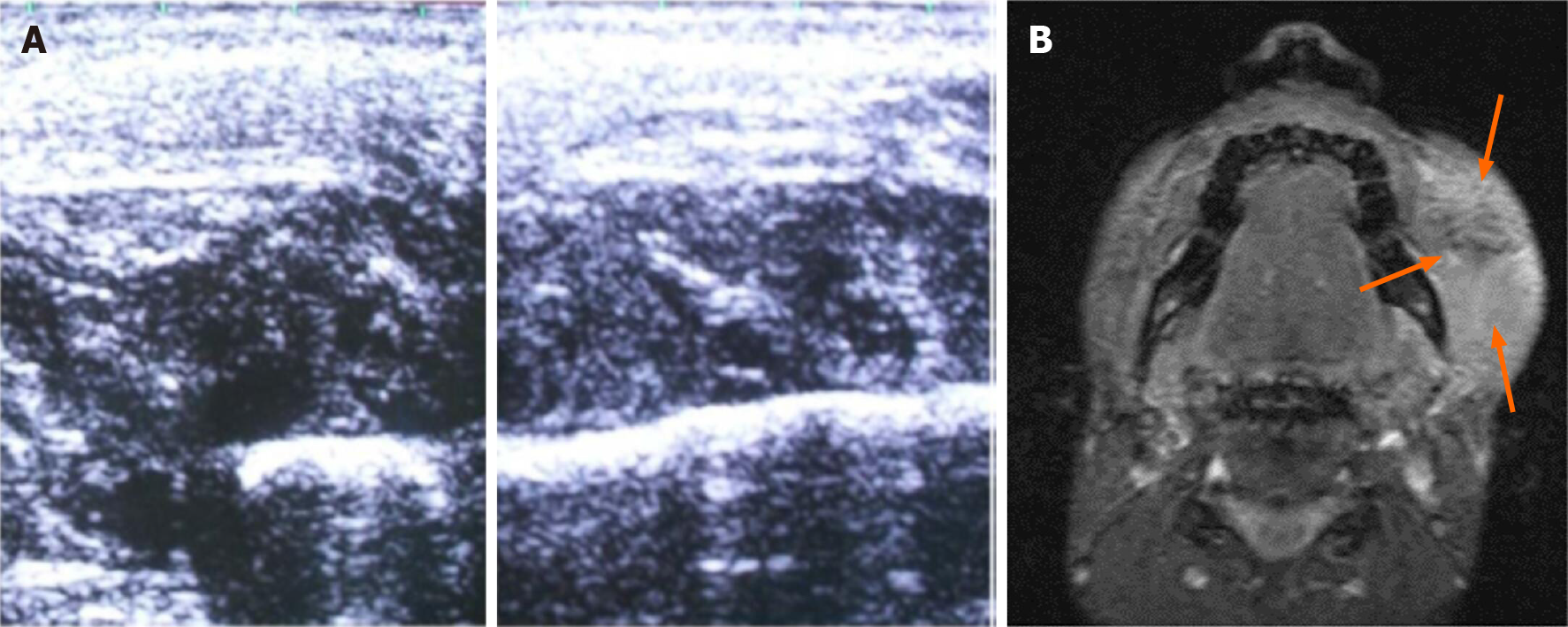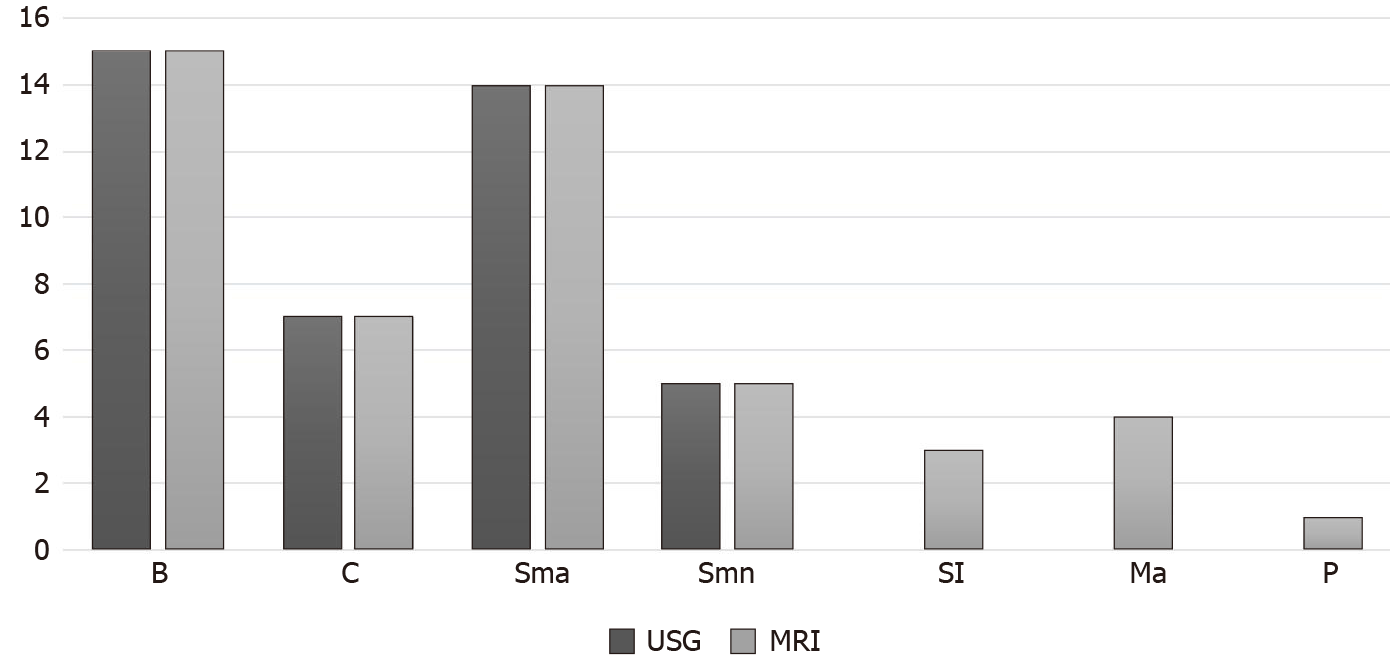Copyright
©The Author(s) 2021.
World J Clin Cases. Jan 26, 2021; 9(3): 573-580
Published online Jan 26, 2021. doi: 10.12998/wjcc.v9.i3.573
Published online Jan 26, 2021. doi: 10.12998/wjcc.v9.i3.573
Figure 1 Comparison of ultrasonography and magnetic resonance images in case of the abscess.
A: The infected space showing the anechoic area with the surrounding wall. B: T2 axial-weighted magnetic resonance images with high signal intensity showing the involvement of buccal space.
Figure 2 Comparison of ultrasonography and magnetic resonance imaging in case of cellulitis.
A: Ultrasonography showing the infected space showing hyperechoic areas with increased subcutaneous thickness; B: Inversion recovery magnetic resonance imaging showing obliteration of adjacent fat planes with stranding.
Figure 3 Identification of spaces by ultrasonography and magnetic resonance imaging.
A: Ultrasonography has identified the superficial spaces involved; B: STIR sequence of magnetic resonance imaging showing the involvement of buccal, submandibular and pharyngeal spaces.
Figure 4 Various fascial spaces identified by ultrasonography and magnetic resonance imaging.
B: Buccal space; C: Canine space; Sma: Submandibular space; Smn: Submental space; Sl: Sublingual space; Ma: Massetric space; P: Pharyngeal space; USG: Ultrasonography; MRI: Magnetic resonance imaging.
- Citation: Ghali S, Katti G, Shahbaz S, Chitroda PK, V Anukriti, Divakar DD, Khan AA, Naik S, Al-Kheraif AA, Jhugroo C. Fascial space odontogenic infections: Ultrasonography as an alternative to magnetic resonance imaging. World J Clin Cases 2021; 9(3): 573-580
- URL: https://www.wjgnet.com/2307-8960/full/v9/i3/573.htm
- DOI: https://dx.doi.org/10.12998/wjcc.v9.i3.573












